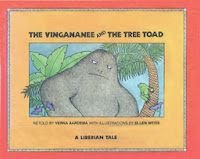Cultural origins: This is a traditional middle eastern folktale with a few stories within stories. While it begins with a King who wants to know if his people love him it ends up really being about deception versus truth in women.
Intended audience: All Ages (8 and up)
Why this audience?: This is probably not the best storytime story. It's definitely for those examining folktales and perhaps Middle Eastern culture. I developed telling this story for a storytelling unit in Middle Eastern Studies, where we examine various themes that repeat in all folktales from that region: wise women, slanderous, jealous women, truth telling birds, the jin, honor in family, and quests that develop into stories within the original story.
Intended audience: All Ages (8 and up)
Why this audience?: This is probably not the best storytime story. It's definitely for those examining folktales and perhaps Middle Eastern culture. I developed telling this story for a storytelling unit in Middle Eastern Studies, where we examine various themes that repeat in all folktales from that region: wise women, slanderous, jealous women, truth telling birds, the jin, honor in family, and quests that develop into stories within the original story.
Characters: The 3 sisters (Older, Middle, Youngest - Fair, Fairer, Fairest)
The King
Fisherman and his wife
Sitt el-Hussn (el-hoosn)
Clever Muhammed
The Wise Woman on the Road
The Talking Lark
Scenes/Settings: The hut of the 3 sisters on the edge of town
The fisherman's hut at the edge of the river
The King's Palace
Sitt el-Hussn & Clever Muhammed's Palace
The road away from town
The Ogre's Garden
Synopsis: Trying to see if his people love him the king decries all people should not use light for one night. He discovers 3 sisters with the light on weaving on the edge of the village. Oldest sister: If the King were to marry me I would bake him a cake big enough to feed him and his entire army. Middle Sister: If the King were to marry me I would weave him a carpet big enough to seat him and his entire army. Youngest Sister: If the King were to marry me I would give him two children: Sitt el-Hussn, mistress of beauty, and Clever Muhammed. He marries each sister in turn and asks for what they promised. The first two sisters do not deliver: "Night talk is like butter, it melts when the sun rises." God is kind to the third sister and she gives birth to two beautiful children. The midwife is convinced by the jealous aunts to switch the twins for a cat and a dog. The twins are sent down the river in a box. A fisherman and his wife discover the children and raise them. When the children are older the couple dies, each leaving a magical gift for the children: two horse hairs when rubbed together will give you anything you want, and a purse that is never empty.
The brother and sister move into town when their parents die and build a castle with their wealth. The Kind visits them and so do the aunts who know who they are. To get rid of them they send Clever Muhammed through the sister on a quest for three hard to find items: the dancing bamboo, the singing bamboo and the talking lark. They are sure this quest will be the death of Muhammed. They convince Sitt el-Hussn that she needs these things for her palace to be perfect. Muhammed packs his things and sets forth "from God's country to God's people." and meets a woman in the road. She directs him to the garden of the ogre for the first two items. The first journey will take 3 years, the second 7 years. The third will take 1,000 years and she won't tell him. So Muhammed rubs the horse hairs together and a Jin on a horse takes him to the garden of the Ogre, but warns him not to speak to any animal in the garden. All the animals try to trick him into speaking, including the talking lark and he is turned to stone. His sister must rescue him from the garden. She closes the door on the cage of the talking lark and her brother is returned to his original state along with all the others.
The talking lark insists on a party. They invite everyone. The talking lark reveals the secret of the evil aunts and they burn them.
Story Climaxes/High Points: The climax for this tale comes toward the end when the deceit of the two aunts, the king's ex-wives, is revealed to all who attend the party for the talking lark. The talking lark tells the king that the midwife switched the twins Sitt el-Hussn and Clever Muhammed for a cat and a dog at birth. The King then decries, "He who love the prophet should set fire to the midwife and the aunts."
Special Chants/Phrases:
Sisters: "Night talk is covered with butter; it melts when the sun rises.”
Narrator: Clever Muhammed set forth from God's countries to God's people.
Narrator: Clever Muhammed set forth from God's countries to God's people.
Bibliographic Information:
Yolen, J. (2003). The Promises of the Three Sisters. In Favorite Folktales from Around the World (pp. 268-276). New York: Pantheon.










